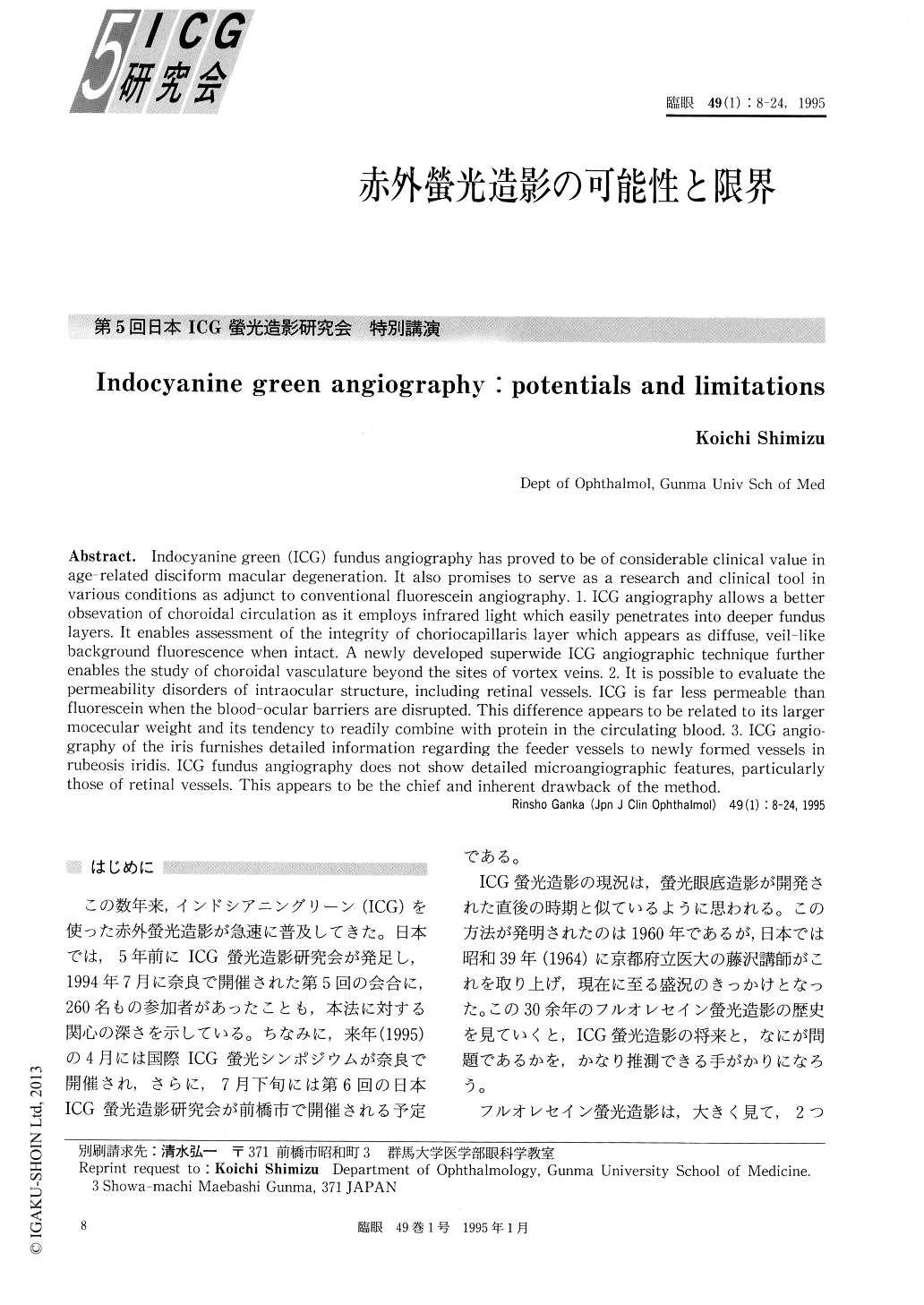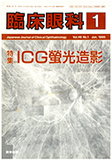Japanese
English
- 有料閲覧
- Abstract 文献概要
- 1ページ目 Look Inside
はじめに
この数年来,インドシアニングリーン(ICG)を使った赤外螢光造影が急速に普及してきた。日本では,5年前にICG螢光造影研究会が発足し,1994年7月に奈良で開催された第5回の会合に,260名もの参加者があったことも,本法に対する関心の深さを示している。ちなみに,来年(1995)の4月には国際ICG螢光シンポジウムが奈良で開催され,さらに,7月下旬には第6回の日本ICG螢光造影研究会が前橋市で開催される予定である。
ICG螢光造影の現況は,螢光眼底造影が開発された直後の時期と似ているように思われる。この方法が発明されたのは1960年であるが,日本では昭和39年(1964)に京都府立医大の藤沢講師がこれを取り上げ,現在に至る盛況のきっかけとなった。この30余年のフルオレセイン螢光造影の歴史を見ていくと,ICG螢光造影の将来と,なにが問題であるかを,かなり推測できる手がかりになろう。
Indocyanine green (ICG) fundus angiography has proved to be of considerable clinical value in age-related disciform macular degeneration. It also promises to serve as a research and clinical tool in various conditions as adjunct to conventional fluorescein angiography. 1. ICG angiography allows a better obsevation of choroidal circulation as it employs infrared light which easily penetrates into deeper fundus layers. It enables assessment of the integrity of choriocapillaris layer which appears as diffuse, veil-like background fluorescence when intact. A newly developed superwide ICG angiographic technique further enables the study of choroidal vasculature beyond the sites of vortex veins. 2. It is possible to evaluate the permeability disorders of intraocular structure, including retinal vessels. ICG is far less permeable than fluorescein when the blood-ocular barriers are disrupted. This difference appears to be related to its larger mocecular weight and its tendency to readily combine with protein in the circulating blood. 3. ICG angio-graphy of the iris furnishes detailed information regarding the feeder vessels to newly formed vessels in rubeosis iridis. ICG fundus angiography does not show detailed microangiographic features, particularly those of retinal vessels. This appears to be the chief and inherent drawback of the method.

Copyright © 1995, Igaku-Shoin Ltd. All rights reserved.


